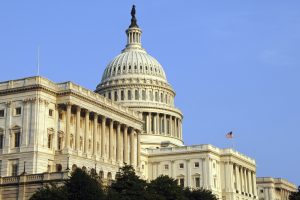 With the U.S. Senate set to debate a fifth COVID-19 supplemental spending bill next week, the politics around providing additional federal help for schools has become intertwined with the politics of reopening schools.
With the U.S. Senate set to debate a fifth COVID-19 supplemental spending bill next week, the politics around providing additional federal help for schools has become intertwined with the politics of reopening schools.
President Donald Trump and Education Secretary Betsy DeVos have made no secret of their desire to condition any new money for schools on whether or not they reopen for 5 day-a-week in-person learning. And yesterday, the Washington Post reported that:
“The White House and Senate Republicans are developing plans to prod schools to reopen by attaching incentives or conditions to tens of billions of dollars of new aid as part of the next coronavirus relief bill.”
These discussions about attaching conditions to any new aid come as a growing number of districts have already said they’re planning to start the school year using remote or virtual instruction rather than in-person classes. In the last week, the four largest districts in California—Los Angeles, San Diego, San Francisco and Sacramento—have announced they will begin the school years with virtual instruction only.
Within the last 24 hours, Wisconsin’s two largest school districts—Milwaukee and Madison—have opted to begin the school year with remote instruction and reevaluate a return to classrooms later in the fall, based on the spread of the virus in those communities.
The debate is also taking place as public opinion about returning to in-person learning appears to be shifting in many parts of the country where the virus is surging.
A Politico/Morning Consult survey found that nationwide 53 percent of Americans are either somewhat or strongly opposed to fully reopening schools for in-person instruction. Just 38 percent supported the move. Poll respondents also reacted negatively to calls to reduce federal funding for schools if they didn’t completely reopen, with 65 percent opposed to such a policy.
Education Week’s Politics K-12 Blog reports that:
“Sen. Lamar Alexander, R-Tenn., the chairman of the Senate’s education committee, said this week he’s willing to provide K-12 and higher education anywhere from $50 billion to $75 billion to reopen safely. Many have taken that as a hint that the federal government will require that money to be spent on personal protective equipment. But school districts also need money to spend on staffing, since that’s where the majority of their costs are right now.
…
“Some other things to keep in mind: Congress in the last package sent its money to heavily impoverished, large, urban, school districts through the somewhat-flawed Title I formula. If it does so again, thousands of other districts that face budget cuts and have large numbers of impoverished students won’t see much stimulus money.”
As state revenues decline, additional federal funding may be necessary to avert drastic cuts in school district budgets. However, many state legislatures have offered scant guidance to their schools about the extent to which they will be able to fulfill past promises of state assistance.
As the Politics K-12 blog notes, “… in many states, where pressure is mounting to reopen schools and a pivotal election hangs in the balance, legislatures prefer to take a more wait-and-see approach to politically sensitive budget cutting.”
What are school leaders to make of this? The blog suggests:
“Right now, the vast majority of state politicians are telling their constituents who are nervous about K-12 budget cuts to go to the feds. They’re hoping that, with all the political pressure to reopen schools, congress will decide to send, at the very least, $60 billion (and as much as $200 billion) to states as part of a stimulus package.
“Many state legislatures have said they’ll reconvene to hash out their budgets once Congress finishes deciding whether or not to send schools a lifeline.”
Stay tuned. It will be an interesting week in Washington with large implications for schools.
